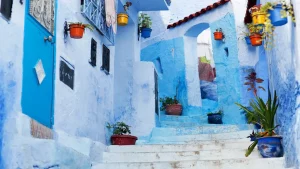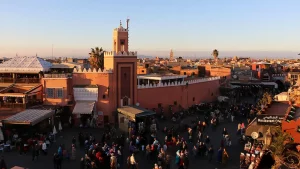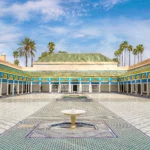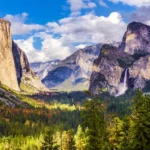Let’s go to discover Tataouine, a city as fascinating as bubbling located at the doors of the desert. You will plunge in time, between ksours and troglodyte houses typical of the Berber villages of the south of Tunisia. A change of scenery is more than guaranteed!
Discovery of the region of Tataouine in Tunisia
If most tourists choose Djerba or Hammamet for their vacations in Tunisia, others are looking for new experiences, far from the traditional tourist circuits and giant hotel complexes. The region of Tataouine is one of the places not to be missed in Tunisia for its desert landscapes, its houses dug in the rock on the side of the hills, and its Berber villages and traditions.
City of Tataouine
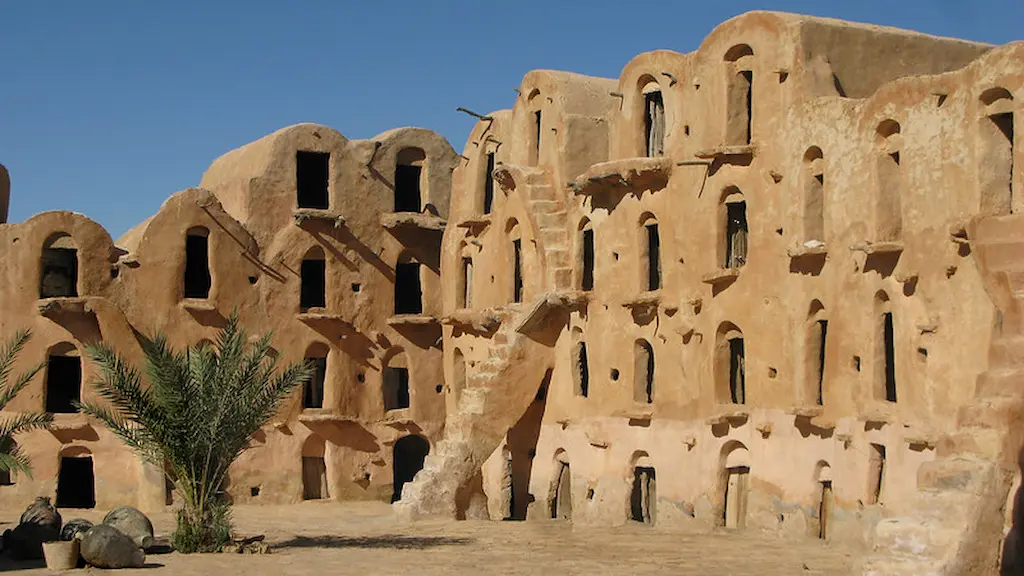
Commonly called “the gateway to the desert”, the city of Tataouine reveals its traditional architecture 108 km south of the island of Djerba and 531 km from Tunis. Hidden behind the sandy mountains of southern Tunisia, Tataouine is also surrounded by many Ksour (ksar in the singular), these fortified villages with Berber-style architecture, typical of North Africa and whose construction dates back to the 15th and 16th centuries. The most famous are Ksar Ouled Soltane, Ksar Hadada, and Ksar Ouled Debbab.
Tataouine is a city of 66,924 inhabitants animated by its souk which concentrates a hundred stalls of artisanal potteries, spices, and Berber tapestries. It is one of the most traditional souks in Tunisia.
In March, the city vibrates even more on the occasion of the International Festival of Saharan ksour which takes place every year since 1979. The event attracts thousands of Tunisians and many visitors from the Maghreb countries.
All year round you can also discover the city’s past at the museum of the memory of the land of Tataouine.
And if the name Tataouine rings a bell, it’s because the city gave its name to the desert planet of the Star Wars saga, directed by George Lucas. It is here (Tatooine) that the famous character of Anakin Skywalker was born. It should also be known that the Ksar Ouled Soltane that we have previously mentioned was used as a set by the teams of George Lucas for the first episode of Star Wars “Star Wars”. It is a must-see for all Jedi fans.
Berber village of Douiret
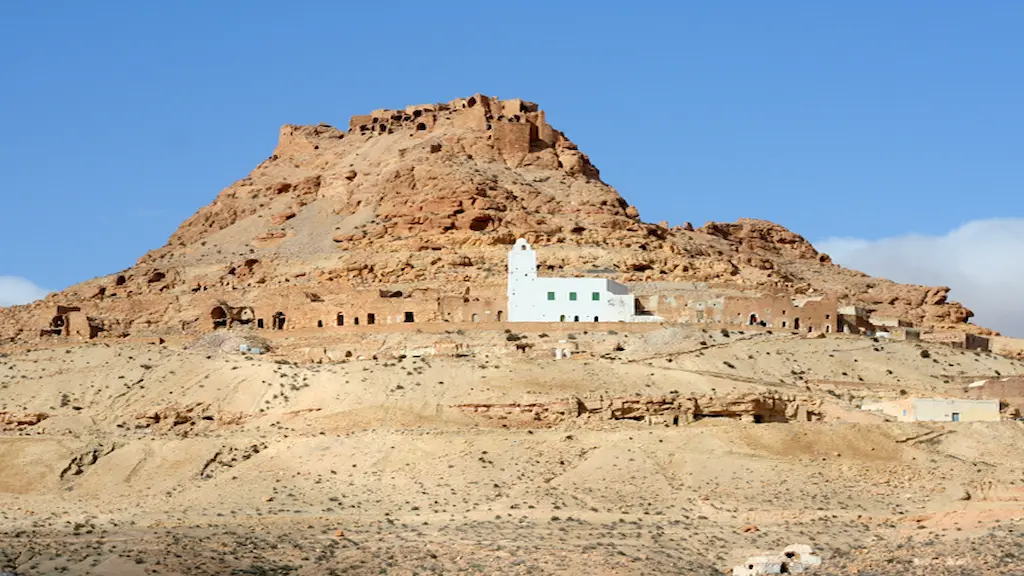
At the top of the rocky hills around Tataouine, we discover charming Berber villages which contribute to the reputation of the region for their beauty, their history, and their traditions.
Let’s start with the Berber village of Douiret which is divided into two distinct areas. The first is the oldest part with its troglodytic dwellings dug into the hill. The second (located a few hundred meters below) corresponds to the more modern part of the village. In Douiret, we can also discover the traces of the fields of cultures that existed formerly near the river.
Berber village of Chenini
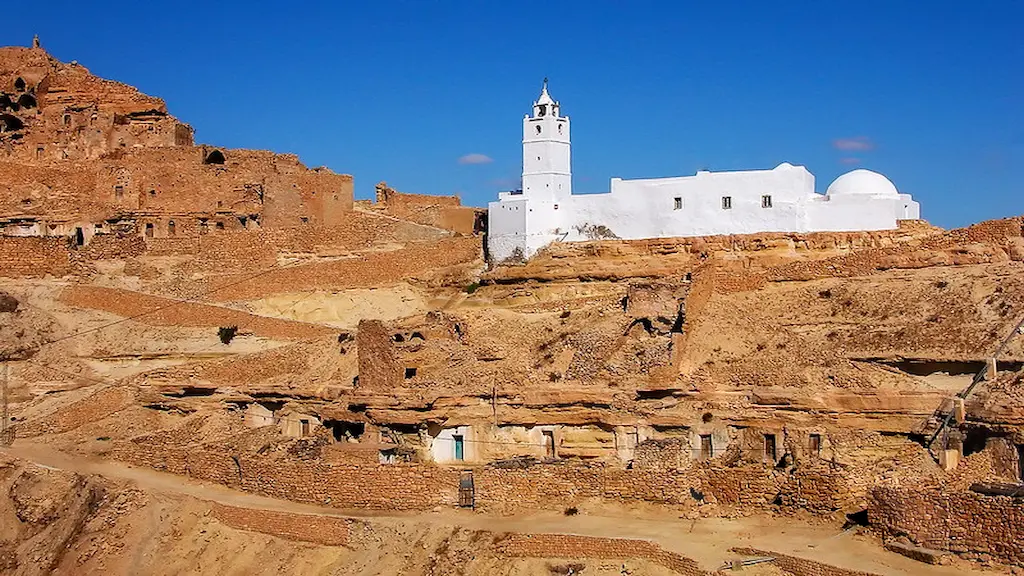
Perched on a rocky spur 18 km from Tataouine, Chenini shines with its beautiful white mosque and its troglodytic dwellings clinging to the mountain where some families still live. On the heights of the village (500 m), we find a citadel ksar which was once a place to store food reserves and valuable goods. The place was also used as a refuge during the Hilalian invasions in the 11th century. Over the years, the risk of attacks and looting diminished and the village began to develop on the slopes of the hillock below. Chenini also gave its name to one of the moons of Luke Skywalker’s planet in Star Wars.
The Mosque of Seven Sleepers
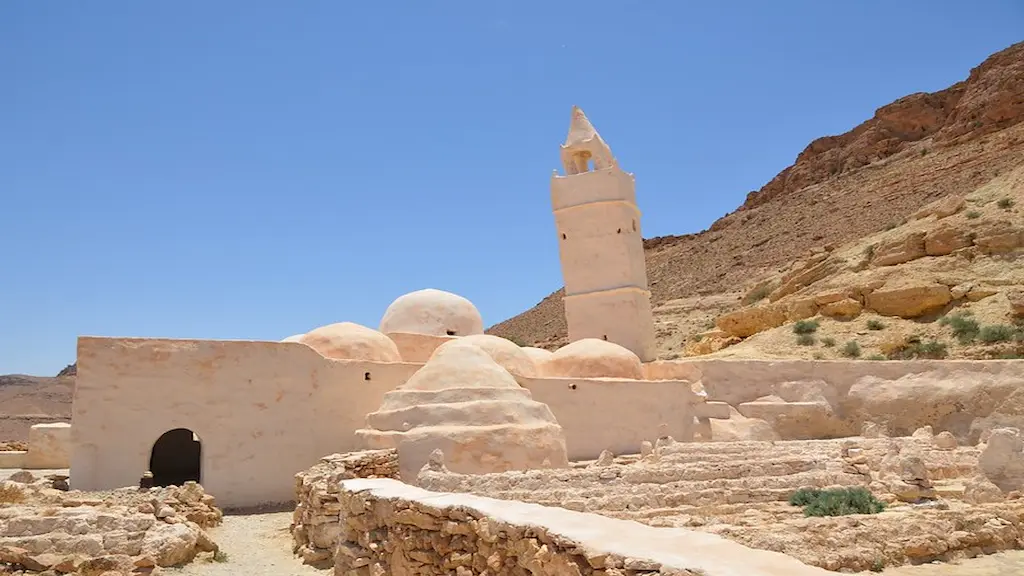
A hike links the Berber villages of Douiret and Chenini. During this excursion, we can stop in the shade of some olive trees and palm trees which made a place for themselves in the heart of the valley, and whose arid landscapes remind the big parks of the American West.
On the way, shortly before arriving in Chenini, we come across the Mosque of the Seven Sleepers and its leaning minaret. The intense white of this semi-troglodytic building built in the 13th century contrasts with the ochre color of the mountain, which makes the place truly exceptional.
Berber village of Guermassa
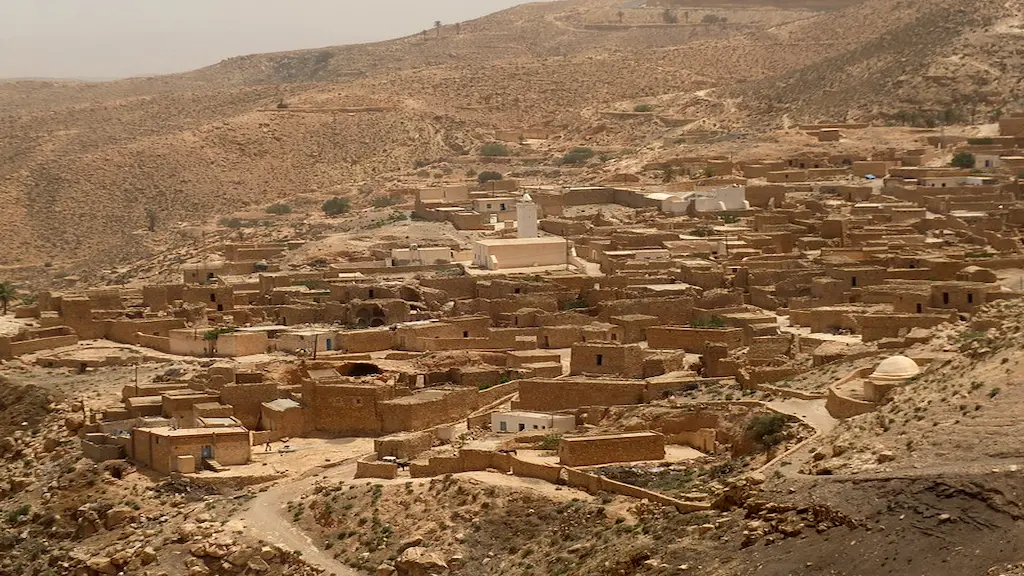
Guermessa is another Berber village about twenty kilometers from Tataouine, which dazzles by the beauty of its desert landscape, almost out of time.
In this village with troglodyte dwellings and picturesque alleys, formerly famous for its embroideries called “margoum”, we also discover a ksar built on the heights which were used as protection against the Arab incursions.
Practical information to visit the region of Tataouine
What is the best period to discover the region of Tataouine?
May and October are the best months of the year to discover Tataouine and its region. The average temperature is 28°C during the day, and 19 to 21°C at night. Rainfall can occur (4 days per month on average), but they have the advantage of cooling the atmosphere.
Tataouine is subject to a desert climate with very hot temperatures in summer, especially in July and August (35°C). In June and September, the values are also high (32/33°C). At this time of the year, the mercury rarely goes below 20°C at night.
Various advice to discover the Tunisian south
What to bring :
- sun cream
- hat / cap
- sunglasses
- good walking shoes
- drinks


